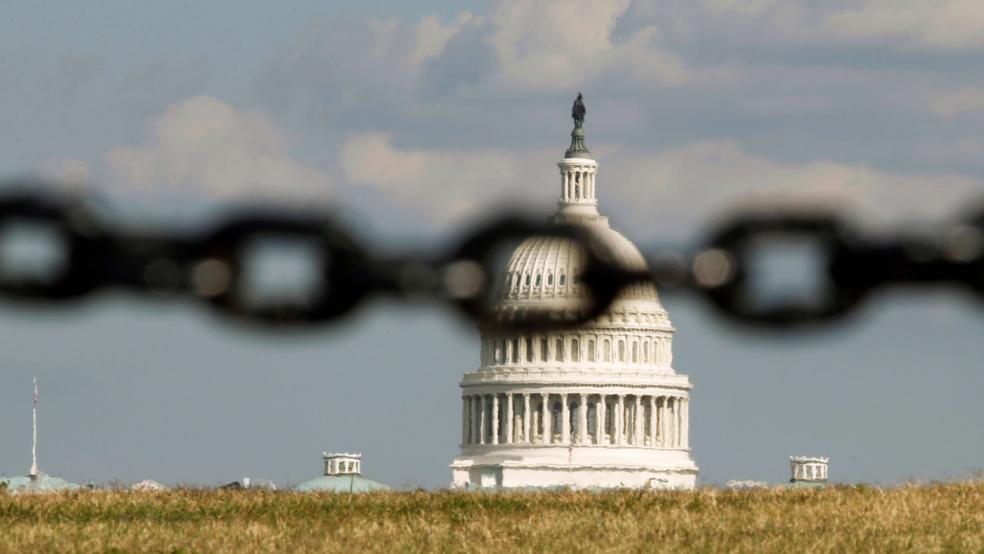When Congress returns to the Capitol next month, lawmakers will have precious little time to try to avoid a government shutdown once current funding runs out after September 30.
The likelihood of a shutdown appears to be high given the status of the 12 annual spending bills — the House has passed one, the Senate none — and, more critically, the differences between the two chambers’ proposed spending levels. The Democratic-controlled Senate is looking to set spending at the level of caps agreed to as part of the deal to raise the debt limit enacted in June. The Republican-controlled House, driven by conservative anger over that deal, is looking for deeper spending cuts.
The chances of a shutdown and a more prolonged fiscal showdown may have been raised further by two recent developments. The first is the Fitch Ratings downgrade of U.S. credit, which cited the government’s fiscal outlook as well as lawmakers’ repeated political brinkmanship over the federal budget and national debt. The second is the indictment of former President Donald Trump.
The downgrade “has emboldened Republicans to call on President Joe Biden and congressional Democrats to yield to their demands for fresh spending cuts,” Erik Wasson and Edward Harrison of Bloomberg News report.
The federal charges against Trump have complicated the picture, clouding the chances for a spending agreement or even a stopgap measure to keep the lights on at federal agencies. “House Republicans are governed by a small band of far-right conservatives who traditionally hate such short-term continuing resolutions, as the measures are known on Capitol Hill,” The Washington Post’s Paul Kane wrote over the weekend. “And the most recent charges against former president Donald Trump have angered those lawmakers, some of whom are threatening to block any bill that provides funding to the Justice Department unless they get to chisel away at money that in any way contributes to special counsel Jack Smith’s investigations.”
Kane notes that prominent House Republicans have been highly critical of the Justice Department and the FBI and that GOP lawmakers “will be under enormous pressure from that far-right flank and outside activists to keep the government open only if Smith’s investigation is essentially shut down.”
That puts Republicans on a collision course with Democrats and raises the chances of an October shutdown — and if lawmakers then can’t complete the 12 annual spending bills by January 1, 2024, all federal agencies could face a budget cut. “By the end of April, if there’s still no resolution to all the 2024 funding bills, every agency must administer a 1 percent reduction in a fairly painful way: a full year’s worth of cuts hitting in just the final five months of the fiscal year,” Kane explains.
Lobbyists think a shutdown is coming: A new survey of “K Street leaders” — aka lobbyists — by Punchbowl News and the Canvass finds that 65% think the government will shut down on October 1 and 80% think there will be a shutdown by January.
Why it matters: “A series of bad steps seems to be set up to unfold,” Kane says: “Some form of government shutdown in October; more battles in the early winter over some legislation; and finally, in the early spring, if there’s no resolution to funding the Justice Department, every agency being hit with an across-the-board cut.”
In the meantime, a lengthy shutdown would also complicate the Federal Reserve’s decisions regarding interest rates and the economy. “It could lead to the Fed potentially missing a Fall pivot point,” Gennadiy Goldberg, senior U.S. rate strategist at TD Securities, told Bloomberg, which notes that Goldman Sachs projected recently that a shutdown would likely cut 0.2 percentage points from gross domestic product for each week it lasts.





